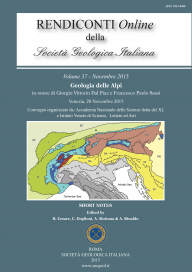
The backbone of Alpine-type orogens: assessing the role of rift inheritance
Marco Beltrando
In this work a GIS-based statistical analysis was used to evaluate shallow-landslide susceptibility along a section of highway "A3, Salerno-Reggio Calabria", between Cosenza Sud and Altilia (northern Calabria, Italy). The study applies the weight of evidence (WofE) method, which is useful in determining landslide susceptibility in large areas with complex geological and geomorphological settings. The statistical analysis is based on past shallow-landslides, geological, pedological and topographic factors, which represent the most relevant landslide predisposing factors. The quality of the proposed model, particularly the fitting performance, was assessed; the landslide database was divided into a training set to obtain the model and a testing set to estimate the model quality. The susceptibility map was classified into five susceptibility classes: very low, low, moderate, high, and very high. About 34% of the study area falls in high to very high susceptible classes and most of the landslides mapped (86%) occur in the same classes. The validation results showed satisfactory agreement between the susceptibility map and the landslides locations; over 83% of the landslides of the testing set are correctly classified falling in high and very high susceptibility areas. Also, the prediction rate curve had shown an area under curve (AUC) value of 80.2% which demonstrates the robustness and good reliability of the landslide susceptibility model. According to these results, we conclude that the map produced by the WofE model is reliable and the methodology applied in the study produced high performance, and satisfactory results, which may be useful for land planning policy.
Abstract
Keywords
Get Full Text